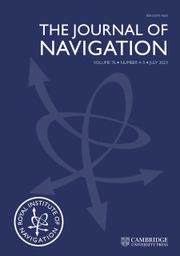No CrossRef data available.
Article contents
Multiple and mixed abnormal measurement processing in multi-GNSS positioning and navigation based on the resilient a priori innovation and posterior residual for harsh environments
Published online by Cambridge University Press: 11 August 2025
Abstract
Global Navigation Satellite System (GNSS) positioning accuracy is challenged due to abnormal signals in harsh environments. This study proposes an approach for multiple and mixed abnormal measurement processing in multi-GNSS positioning and navigation based on the resilient a priori innovation and posterior residual (PR) for harsh environments. Specifically, first, both static and kinematic processing modes are considered when calculating the innovation vector (IV). Second, observations are classified and abnormal measurements are eliminated based on the different observation accuracies of different GNSS systems within the resilient IV method. Finally, the resilient PR method considers the total number of redundant observations. Compared with the traditional IV and PR method, the RIP method improves the positioning accuracy by approximately 30.2% and 58.0% in static experimental datasets No. 1 and No. 2, respectively. In the kinematic experiment, it improves the ambiguity success rate and positioning accuracy by approximately 41.5% and 86.7%, respectively.
Information
- Type
- Research Article
- Information
- Copyright
- © The Author(s), 2025. Published by Cambridge University Press on behalf of The Royal Institute of Navigation


